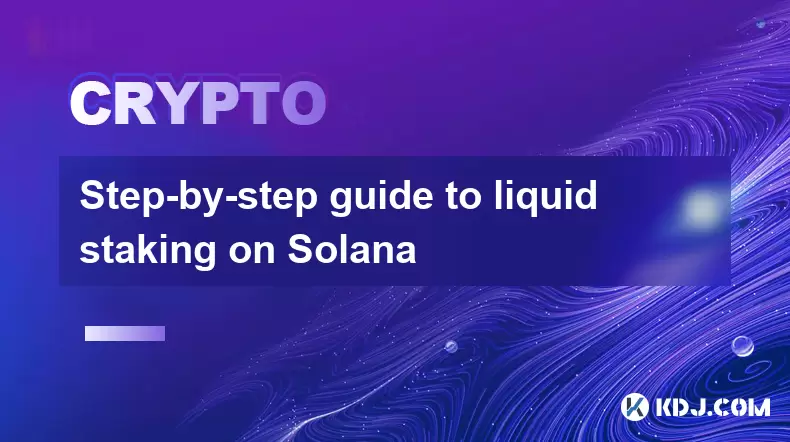-
 Bitcoin
Bitcoin $118900
1.66% -
 Ethereum
Ethereum $3735
1.35% -
 XRP
XRP $3.506
0.71% -
 Tether USDt
Tether USDt $1.000
-0.01% -
 BNB
BNB $799.4
5.78% -
 Solana
Solana $202.0
1.87% -
 USDC
USDC $0.9999
0.00% -
 Dogecoin
Dogecoin $0.2661
1.89% -
 Cardano
Cardano $0.8877
1.59% -
 TRON
TRON $0.3173
2.45% -
 Hyperliquid
Hyperliquid $45.00
2.59% -
 Stellar
Stellar $0.4723
3.40% -
 Sui
Sui $3.970
1.32% -
 Chainlink
Chainlink $19.67
1.94% -
 Hedera
Hedera $0.2710
1.99% -
 Avalanche
Avalanche $25.74
-0.01% -
 Bitcoin Cash
Bitcoin Cash $528.1
1.98% -
 Litecoin
Litecoin $120.1
3.57% -
 Shiba Inu
Shiba Inu $0.00001525
1.26% -
 UNUS SED LEO
UNUS SED LEO $8.989
-0.01% -
 Toncoin
Toncoin $3.304
1.74% -
 Polkadot
Polkadot $4.531
3.38% -
 Uniswap
Uniswap $10.74
2.51% -
 Ethena USDe
Ethena USDe $1.001
0.00% -
 Monero
Monero $325.5
2.44% -
 Pepe
Pepe $0.00001413
1.31% -
 Bitget Token
Bitget Token $4.860
0.85% -
 Dai
Dai $0.9999
0.01% -
 Aave
Aave $307.3
-2.07% -
 Bittensor
Bittensor $448.8
2.91%
How do I use my stETH in DeFi?
stETH allows users to earn staking rewards and participate in DeFi by providing liquidity, lending, or yield farming.
Jul 23, 2025 at 06:42 am

Understanding stETH and Its Role in DeFi
stETH, or staked Ether, is a token issued by Lido Finance in exchange for users who stake their ETH on the Ethereum 2.0 network. When you stake your ETH through Lido, you receive stETH tokens that represent your staked assets plus the accrued staking rewards. These tokens are liquid and can be used across various DeFi protocols to generate additional yield.
The integration of stETH into DeFi opens up multiple opportunities for yield optimization, liquidity provision, and lending. However, understanding the mechanics behind stETH's liquidity and its acceptance across DeFi platforms is crucial before diving into its usage.
Using stETH in Lending and Borrowing Protocols
One of the most straightforward ways to use stETH is by depositing it into lending protocols such as Aave or Compound. These platforms allow users to earn interest by supplying assets to the pool while enabling borrowers to take out loans against deposited collateral.
- Connect your wallet to the chosen lending platform.
- Navigate to the supply section and select stETH as the asset to deposit.
- Confirm the transaction and start earning interest.
When using stETH in these protocols, it's important to note that while the token appreciates in value over time due to staking rewards, the APY (Annual Percentage Yield) from the lending protocol is separate and adds to your overall returns.
Providing Liquidity with stETH in DEXs
Decentralized Exchanges (DEXs) like Balancer, Curve Finance, and Uniswap allow users to provide liquidity using stETH in exchange for liquidity provider (LP) tokens. These tokens can then be used to earn trading fees and sometimes additional yield through incentives.
- Choose a DEX that supports stETH pools.
- Deposit stETH and ETH or stablecoins into the liquidity pool.
- Receive LP tokens and optionally stake them in a yield farm for extra rewards.
Each DEX has different mechanisms for balancing pools and distributing incentives. For example, Curve Finance offers low-slippage swaps for stablecoins and ETH derivatives, making it a popular choice for stETH/ETH liquidity pools. The impermanent loss risk should also be considered when providing liquidity.
Yield Farming with stETH
Yield farming involves using stETH to earn additional tokens from DeFi platforms. Many protocols incentivize liquidity providers with governance or reward tokens. Platforms like Lido's own rewards, Balancer pools, or third-party yield aggregators often offer extra incentives for users who stake their LP tokens.
- Supply stETH to a supported liquidity pool.
- Stake the LP tokens in a yield farm.
- Claim additional tokens as rewards periodically.
Yield farming with stETH can significantly boost returns, but it also comes with higher risks such as smart contract vulnerabilities and token volatility. Always research the platform and understand the risks before committing funds.
Using stETH as Collateral for Borrowing
Another powerful use case for stETH is using it as collateral to borrow other assets. Protocols like Aave and MakerDAO allow users to lock up stETH and take out loans in stablecoins or other cryptocurrencies.
- Deposit stETH into the lending platform.
- Enable stETH as collateral within the platform.
- Borrow assets against the deposited stETH.
The loan-to-value (LTV) ratio determines how much you can borrow relative to your stETH deposit. Be cautious about liquidation thresholds, as a drop in the value of stETH could trigger a liquidation event.
Staking and Re-Staking Opportunities with stETH
Beyond traditional DeFi uses, stETH can also be used in more advanced staking and re-staking protocols. Some newer platforms are exploring re-staking models where users can stake stETH to secure other networks or validate transactions on alternative blockchains.
- Deposit stETH into a re-staking protocol.
- Earn rewards from both Ethereum staking and the secondary network.
- Monitor for slashing risks or protocol-specific penalties.
This area is still evolving, and users should ensure that the re-staking protocol is audited, trusted, and aligns with their risk tolerance.
Frequently Asked Questions
Q: Can I swap stETH back to ETH anytime?
Yes, you can unstake your stETH via Lido or other liquidity solutions like Curve Finance pools. However, there may be withdrawal queues or waiting periods depending on Ethereum's network conditions.
Q: Is stETH affected by Ethereum network upgrades?
Yes, stETH is tied to the performance of the Ethereum network and its staking rewards. Network upgrades like The Merge have already affected staking yields and will continue to influence them in the future.
Q: Are there any fees associated with using stETH in DeFi?
Yes, using stETH in DeFi incurs gas fees on Ethereum, protocol fees, and potentially slippage costs when swapping or providing liquidity. Always check the fee structures before executing transactions.
Q: Can I use stETH in non-Ethereum blockchains?
Currently, stETH is primarily used on Ethereum, but some bridges and cross-chain solutions are exploring ways to bring stETH to other networks. Always verify the compatibility of stETH with the target blockchain before attempting transfers.
Disclaimer:info@kdj.com
The information provided is not trading advice. kdj.com does not assume any responsibility for any investments made based on the information provided in this article. Cryptocurrencies are highly volatile and it is highly recommended that you invest with caution after thorough research!
If you believe that the content used on this website infringes your copyright, please contact us immediately (info@kdj.com) and we will delete it promptly.
- ONDO ETF Incoming? 21Shares and the Coinbase Custody Connection
- 2025-07-23 14:30:12
- Check Your Change! UK Coins Worth £40,000 Could Be Hiding in Plain Sight
- 2025-07-23 14:50:12
- PNC Bank & Coinbase: A New York Minute on Crypto Services Partnership
- 2025-07-23 14:50:12
- Crypto, India, and the COINS Act: A New Dawn for Digital Assets?
- 2025-07-23 14:55:12
- IREN's Bitcoin Mining Prowess Meets AI: An SOTP Valuation Deep Dive
- 2025-07-23 12:30:12
- Arca, PENDLE, and Kraken: Navigating DeFi's Institutional Currents
- 2025-07-23 11:10:11
Related knowledge

Understanding the composition of a liquid staking token's yield
Jul 20,2025 at 09:07am
What Is a Liquid Staking Token?A liquid staking token is a representative asset issued to users who stake their native cryptocurrency on a proof-of-st...

Is it better to stake directly or use a liquid staking service?
Jul 22,2025 at 08:21pm
Understanding the Basics of StakingStaking in the context of blockchain and cryptocurrency refers to the process of locking up digital assets to suppo...

What to do during an LST depeg event
Jul 20,2025 at 04:57pm
Understanding LST Depeg EventsAn LST (Liquid Staking Token) depeg event occurs when the token, which is typically pegged to the value of the underlyin...

Can you provide liquidity with liquid staking tokens?
Jul 22,2025 at 10:22am
Understanding Liquid Staking TokensLiquid staking tokens (LSTs) are derivative tokens that represent staked assets on a proof-of-stake (PoS) blockchai...

What are the best wallets for storing LSTs?
Jul 21,2025 at 03:14pm
Understanding LSTs and the Need for Secure StorageLSTs, or Liquid Staking Tokens, are derivative tokens representing staked assets on a blockchain. Wh...

Step-by-step guide to liquid staking on Solana
Jul 20,2025 at 06:42am
What is Liquid Staking on Solana?Liquid staking is a mechanism that allows users to stake their cryptocurrency while retaining liquidity through the i...

Understanding the composition of a liquid staking token's yield
Jul 20,2025 at 09:07am
What Is a Liquid Staking Token?A liquid staking token is a representative asset issued to users who stake their native cryptocurrency on a proof-of-st...

Is it better to stake directly or use a liquid staking service?
Jul 22,2025 at 08:21pm
Understanding the Basics of StakingStaking in the context of blockchain and cryptocurrency refers to the process of locking up digital assets to suppo...

What to do during an LST depeg event
Jul 20,2025 at 04:57pm
Understanding LST Depeg EventsAn LST (Liquid Staking Token) depeg event occurs when the token, which is typically pegged to the value of the underlyin...

Can you provide liquidity with liquid staking tokens?
Jul 22,2025 at 10:22am
Understanding Liquid Staking TokensLiquid staking tokens (LSTs) are derivative tokens that represent staked assets on a proof-of-stake (PoS) blockchai...

What are the best wallets for storing LSTs?
Jul 21,2025 at 03:14pm
Understanding LSTs and the Need for Secure StorageLSTs, or Liquid Staking Tokens, are derivative tokens representing staked assets on a blockchain. Wh...

Step-by-step guide to liquid staking on Solana
Jul 20,2025 at 06:42am
What is Liquid Staking on Solana?Liquid staking is a mechanism that allows users to stake their cryptocurrency while retaining liquidity through the i...
See all articles

























































































